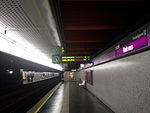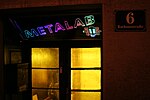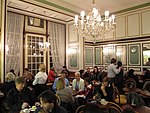Vienna City Hall
1883 establishments in Austria19th-century architecture in AustriaBuildings and structures in Innere StadtBuildings and structures in ViennaCity and town halls in Austria ... and 1 more
Government buildings completed in 1883

Vienna City Hall (German: Wiener Rathaus) is the seat of local government of Vienna, located on Rathausplatz in the Innere Stadt district. Constructed from 1872 to 1883 in a Neo-Gothic style according to plans designed by Friedrich von Schmidt, it houses the office of the Mayor of Vienna as well as the chambers of the city council and Vienna Landtag diet. For a brief period between 1892 and 1894, the Vienna City Hall was the world's tallest building, until it was eclipsed by Milwaukee City Hall.
Excerpt from the Wikipedia article Vienna City Hall (License: CC BY-SA 3.0, Authors, Images).Vienna City Hall
City Hall Square, Vienna Innere Stadt
Geographical coordinates (GPS) Address Nearby Places Show on map
Geographical coordinates (GPS)
| Latitude | Longitude |
|---|---|
| N 48.210833333333 ° | E 16.356944444444 ° |
Address
Arkadenhof
City Hall Square
1010 Vienna, Innere Stadt
Austria
Open on Google Maps










